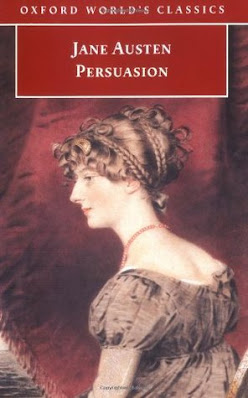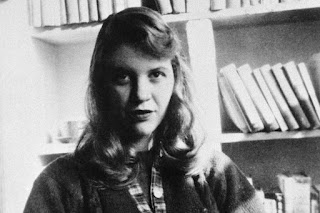David Lodge's 'The Art of Fiction'
 I have just finished David Lodge's 'The Art of Fiction' and it was very enlightening. Although I was familiar with most of the literary devices he explains, such as the epistolary novel and pathetic fallacy, it is hard to find a compact synopsis of them with good examples. I just wanted to highlight some of the chapters and explain thoughts that arose to me while reading the book. Chapter 30 is on Symbolism and David lodge used an excerpt from Lawrence's 'Women in Love'. This made me reflect on Lawrence as a writer and it came to me he has a strong liking towards animals, in particular horses. In this excerpt he describes how the mare 'spun and swerved like the wind, and yet could not get out of the grasp of his will'. This, for me, was a striking resemblance to his novel 'St Mawr'. In this novel Lou Witt is entranced by a powerfull stallion called St. Mawr who seems to represent all the masculinity and vitality men are missing in her opinion. She is almost forced to realise that 1920s England is not her place. In the excerpt from 'Women in Love' the mare is supressed by Gerald Critch, who is forcing her to face industrialisation, represented by a locomotive. I thought it was striking how similar these two scenes are although their respective books were published 4 years apart. It can be concluded that Lawrence saw the animal as a strong symbol of life.
I have just finished David Lodge's 'The Art of Fiction' and it was very enlightening. Although I was familiar with most of the literary devices he explains, such as the epistolary novel and pathetic fallacy, it is hard to find a compact synopsis of them with good examples. I just wanted to highlight some of the chapters and explain thoughts that arose to me while reading the book. Chapter 30 is on Symbolism and David lodge used an excerpt from Lawrence's 'Women in Love'. This made me reflect on Lawrence as a writer and it came to me he has a strong liking towards animals, in particular horses. In this excerpt he describes how the mare 'spun and swerved like the wind, and yet could not get out of the grasp of his will'. This, for me, was a striking resemblance to his novel 'St Mawr'. In this novel Lou Witt is entranced by a powerfull stallion called St. Mawr who seems to represent all the masculinity and vitality men are missing in her opinion. She is almost forced to realise that 1920s England is not her place. In the excerpt from 'Women in Love' the mare is supressed by Gerald Critch, who is forcing her to face industrialisation, represented by a locomotive. I thought it was striking how similar these two scenes are although their respective books were published 4 years apart. It can be concluded that Lawrence saw the animal as a strong symbol of life. In the book each chapter is dedicated to a literary device. My "favourites" were Chapter 8: Names, Chapter 21: Intertextuality and Chapter 24: Magic Realism.
Chapter 8 focusses on names and the reason I took an immediate interest to the chapter was that in one of my Dutch exams I once got the question what Emily Bronte had been thinking when she named her protagonist Jane Eyre. I was baffled since this had never been discusse din class. However, after some brainstorming, quick brainstorming I may add, I came up with the following:
Jane is a very common and ordinary name in English. The expression 'plain Jane' might be suitable to describe Jane Eyre and therefore perhaps her first name was represent her commonness in her looks and social position that seperate her from Mr. Rochester and her family. However, her last name, Eyre, is exotic, outlandish. I thought that perhaps this told us something about her character, something that is not quite usual in young women of her position.
David Lodge said that 'in a novel names are never neutral.' I completely agree, even thought often the meaning of a name is hard to find. Some names can be very easily linked, such as names from the Bible. If a character is names Eva there are a whole lot of possible connotations that can add to your character. I have started writing a story in which the protagonist is named Eva and she is looking back on her fall from grace, so to speak. Obvious connection, n'est pas?
Chapter 21 on intertextuality is very interesting on many different levels. First of all, all authors copy each other in some way, e.g. Virgil copied Homer's writing style in the Aeneid but I do not blame him. Something that has become clearer to me over the years for example is how much inspiration Tolkien got from the Prose and Poetic 'Edda', from 'The Nibelungen' and others. Some names are heavily influenced if not copied, which links back nicely to the paragraph above, but it is mainly themes that we can recognize. The question that formed in my mind however was: how far is this copying other authors or are these themes, such as death, loyalty, betrayal and love, simply human and therefore come from each author independently?
Of course intertextuality mainly has to do with linking back to different books in your own story. The example David Lodge gives in the book is the correlation between Joseph Conrad's 'The Shadow Line' and Coleridge's 'The Rime of the Ancient Mariner'. However, there are more obvious examples, such as James Joyce's 'Ulysses', where the intertextuality starts with the title.
Chapter 24 is on Magic Realism and this is a style of writing I particularly like. As David Hume said 'humans love the fantastical' and often the impression an experience gives us cannot be described through purely realistic use of language. Sometimes the impossible is the best way to describe the possible. David Lodge uses Milan Kandera's 'The Book of Laughter and Forgeting' as an example and in the excerpt a circle of dancing people takes of and flies away while the narrator is left behind. It is obvious this cannot happen, but the feeling of isolation, alienation and loneliness is all the more poignant and it is beautifully described.
What do you think on any of these three chapters? Have you read the book or ones similar to it?



Hi Juli,
ReplyDeleteGood review. Your sentence, " The question that formed in my mind however was: how far is this copying other authors or are these themes, such as death, loyalty, betrayal and love, simply human and therefore come from each author independently?" reminded me that some French authors at the moment are disguising outright plagiarism as intertextuality.
See my blog post:
http://johnjgaynard.blogspot.com/2011/09/bill-bryson-plagiarized-by-leading.html
A very recent mention of positive use of intertexuality I have seen is that of Curzio Malaparte practising it between his own books. Here is a quote from the New York Review of Books:
"In a handsome bit of intertextuality, (Malaparte) has French officers discussing in The Skin whether one can believe anything in Kaputt. They’re about to enter and “liberate” Rome; they’ve just eaten a couscous lunch on the grass prepared by Moroccan soldiers:
“Do you want to know,” said Pierre Lyautey, “what Malaparte will say about this lunch of ours in his next book?” And he proceeded to give an extremely amusing description of a sumptuous banquet, the scene of which was not the heart of a wood on the high bank of the Lake of Albano but a hall in the Pope’s villa at Castel Gandolfo. Seasoning his discourse with a number of witty anachronisms, he described the porcelain crockery of Cesare Borgia, the silver ware of Pope Sixtus—the handiwork of Benvenuto Cellini—the golden chalices of Pope Julius II, and the papal footmen busying themselves about our table while a chorus of angel voices at the end of the hall intoned Palestrina’s “Super flumina Babylonis” in honor of General Guillaume and his gallant officers."
http://www.nybooks.com/articles/archives/2011/oct/27/rogue-genius/
Best wishes and good luck with the blog,
John